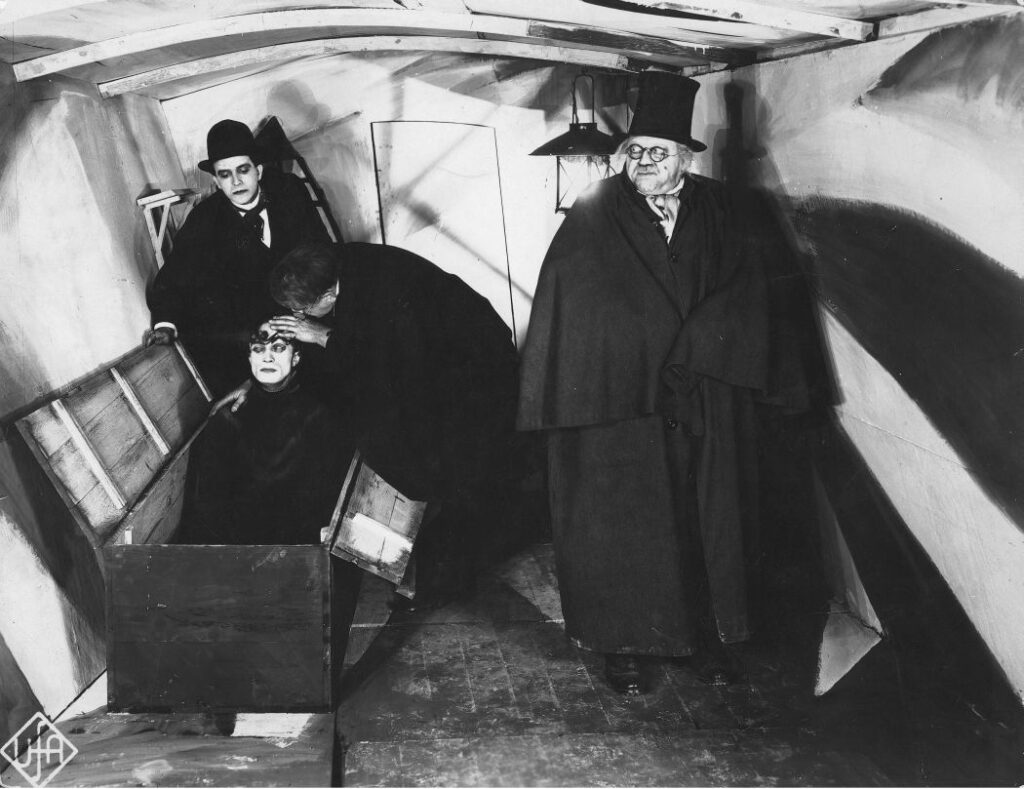The horror silent film “Das Cabinet des Dr. Caligari” by Robert Wiene from 1920 is an important milestone in film history and counts as an essential work of German expressionist film. Before the Second World War, he had a profound stylistic influence on much of German cinema, was the forerunner of the atmospheric light-dark look of the film Noir of the 1940s and, according to Siegfried Kracauer, was a harbinger of the rise of National Socialism in his groundbreaking book “From Caligari to Hitler”.
The film tells the story of an insane hypnotist (Werner Krauss) who uses a somnambuist (Conrad Veidt) to commit murders. The film shows a dark and confusing visual style with pointed shapes, slanted and curved lines, structures and landscapes that tilt and rotate at unusual angles, as well as shadows and stripes of light painted directly on the sets. As with some silent films, images were colored to symbolize e.g. day (light brown) and night (blue).
The film deals with brutal and irrational authority, and it seems that the film reflects an unconscious need of a tyrant in German society and is an example of the Germans’ obedience to authority and the unwillingness to rebel against disturbed authority. Some critics have interpreted Caligari as a representative of the German war government, with Cesare being a symbol of the simple man conditioned to kill like soldiers. Other themes of the film are the destabilized contrast between madness and mental health, the subjective perception of reality and the duality of human nature. Despite its age, Dr. Caligari’s Cabinet is a hypnotic masterpiece that still manages to disturb and provoke.
